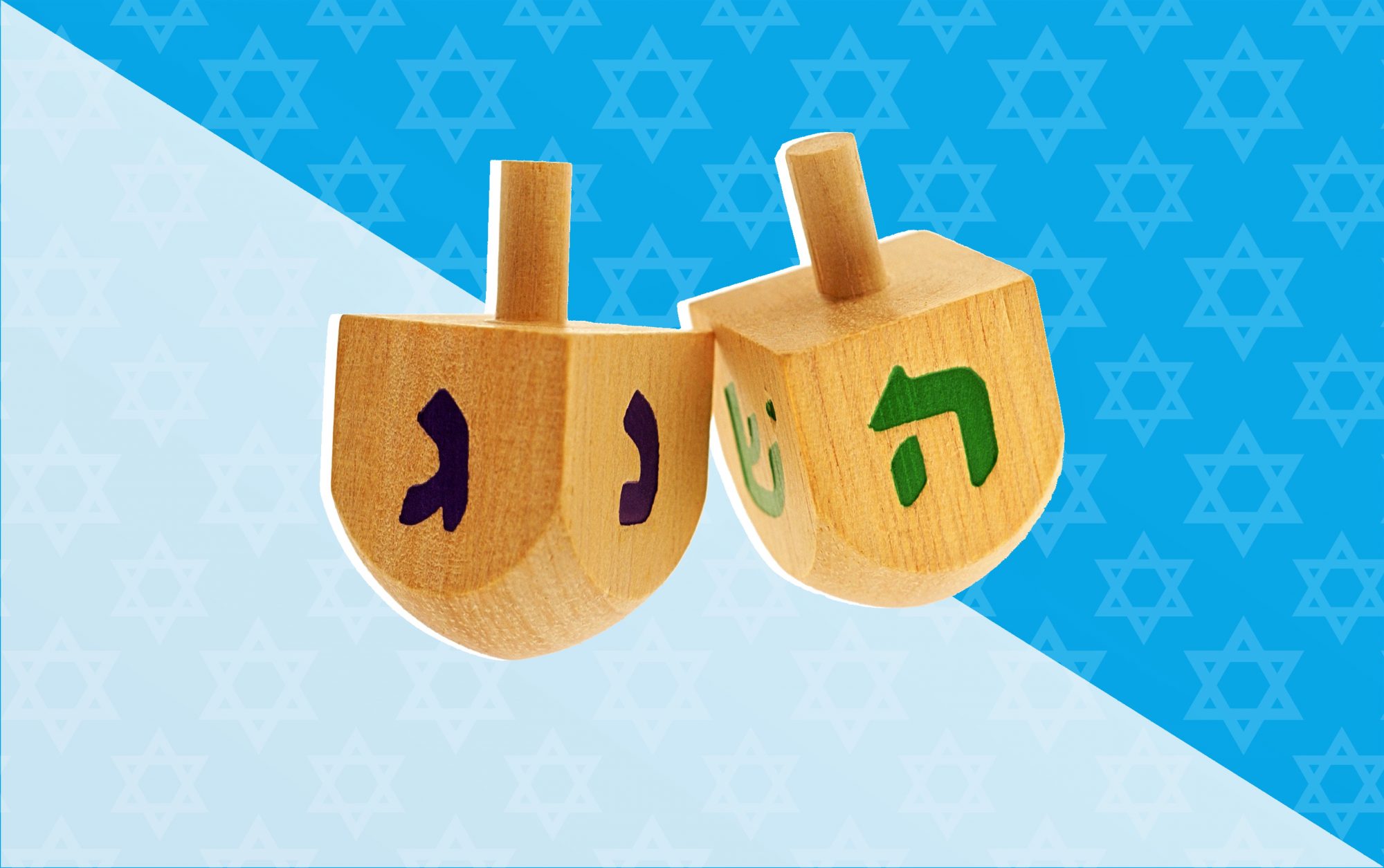"Hanukkah" means dedication in Hebrew, and the Jewish holiday, also known as The Festival of Lights, represents joy. It's punctuated by an eight-night display of dancing flames atop candles held in intricate menorahs, conveying warmth, comfort, and in Hanukkah's case, a miracle.
As the Catholic half of a Judeo-Christian interfaith couple, I've learned a lot from my family members about Jewish holidays. Now I love being the teacher for my own kids. I'm grateful that Hanukkah reminds my brood that the smallest of miracles can keep the darkness at bay, and the holiday will surely play a vital role in my family's mental well-being this year.
Looking to teach your own kids the Hanukkah story? Here's how I've learned to simplify it for our youngest generation while highlighting its spiritual significance and using its story as a source of comfort.

The History of Hanukkah
Over two thousand years ago, Antiochus, a cruel ruler of the Greek Kingdom, imposed pagan beliefs on the Jewish people. "You'll worship Zeus," he proclaimed, and set up statues to Greek idols and slaughtered pigs at the altar, dirtying the temple.
The Maccabees, a group of devastated Semitic people, were so unhappy that they refused to assimilate into the Greek culture as others had done. When an old priest, Mattityahu, and his son Yehuda bravely rose up, they risked their lives and battled the Greeks. The small band of dedicated followers eventually defeated the Greek general and his army, winning the war and protection for the Torah, a book of Jewish teachings, writings, and laws.
The Jews were overjoyed by their victory and reclaimed the temple, Beit Hamikdash. As they cleansed the holy building for rededication, only one jug of oil, blessed and sealed by the high priest, the Kohen Gadol, remained for which to light the lamp. Heads hung low when they realized this was only enough oil to keep it lit for one night.
To their amazement, that one pure jug burnt for eight nights until more containers of sacred oil arrived. "It's a miracle," the Jewish people shouted as they danced. The Hanukkah celebration grew out of their excitement about this wonderment and each year it reassures them that strength, tenacity, and hope will always prevail.
Hanukkah Holiday Traditions
Hanukkah was always considered a minor Jewish holiday. Jews weren't required to follow specific theological rules, such as those laid out for Shabbat and other more Holy Days. The simple celebration of Hanukkah consisted of lighting the menorah to commemorate the miracle that occurred for eight nights in the temple.
It wasn't until many Jewish immigrants arrived in America in the late 19th and early 20th centuries that the traditions shifted. That's when other customs that we associate with the holiday, such as gifts, parties, and gelt (gold coins) came to life. Over the years, Hanukkah has become a gift-giving holiday and a bigger deal for Jewish Americans, especially for those families with young children.
Celebrating the First Night of Hanukkah
The first night ritual is joyous. I usually cook a family dinner laden with delicious fried foods, such as fried potato latkes and jelly donuts, to honor the miracle. After dinner, our family gathers to light the menorah candles, recite blessings, and sing songs. Afterward, there are gifts for children, dreidel games, yummy chocolate gelt, and other merriment.
Teaching Young Kids About Hanukkah
Since preschoolers learn through music, repetition, and tactile stimulation, Barbara Gross, a preschool teacher, "puts lessons to songs and uses fine motor skills" to teach her 2-year-old students about Hanukkah through play. She creates simple, repetitious melodies with correlating hand movements to well-known tunes but substitutes words that represent the holiday. Then, she models frying the latke in a pan with the KidKraft Chanukah Set and gives the children stickers to peel off for themselves, reinforcing the lesson and allowing them to strengthen their fine motor skills.
Stacey Palker, a kindergarten teacher at Tamim Academy in Greenwich, Connecticut, says she "focuses on the light" when introducing her students to the history of Hanukkah. She constructs a light table to illustrate the contrasts between light and dark.
Palker also suggests using a hand-painted set of peg dolls to model the Hanukkah story by giving each character a different voice. "Kids play incessantly," she says. Afterward, they can role-play with the dolls, re-enacting the story themselves. As they grow older, the dolls become a keepsake to pass down to other generations.
Ashkenazi Jewish tradition dictates that each member of a family has his or her own menorah to light. A captivating way to tell the story of Hanukkah is to craft a menorah with your child each year. While I made menorahs with my daughter this year, I made symbolic connections about light and miracles and encouraged her to ask questions about the holiday's traditions.
Hanukkah Books for Kids
Looking to talk about the history of Hanukkah with your kids? Here are some more ways to tell the Hanukkah story.
